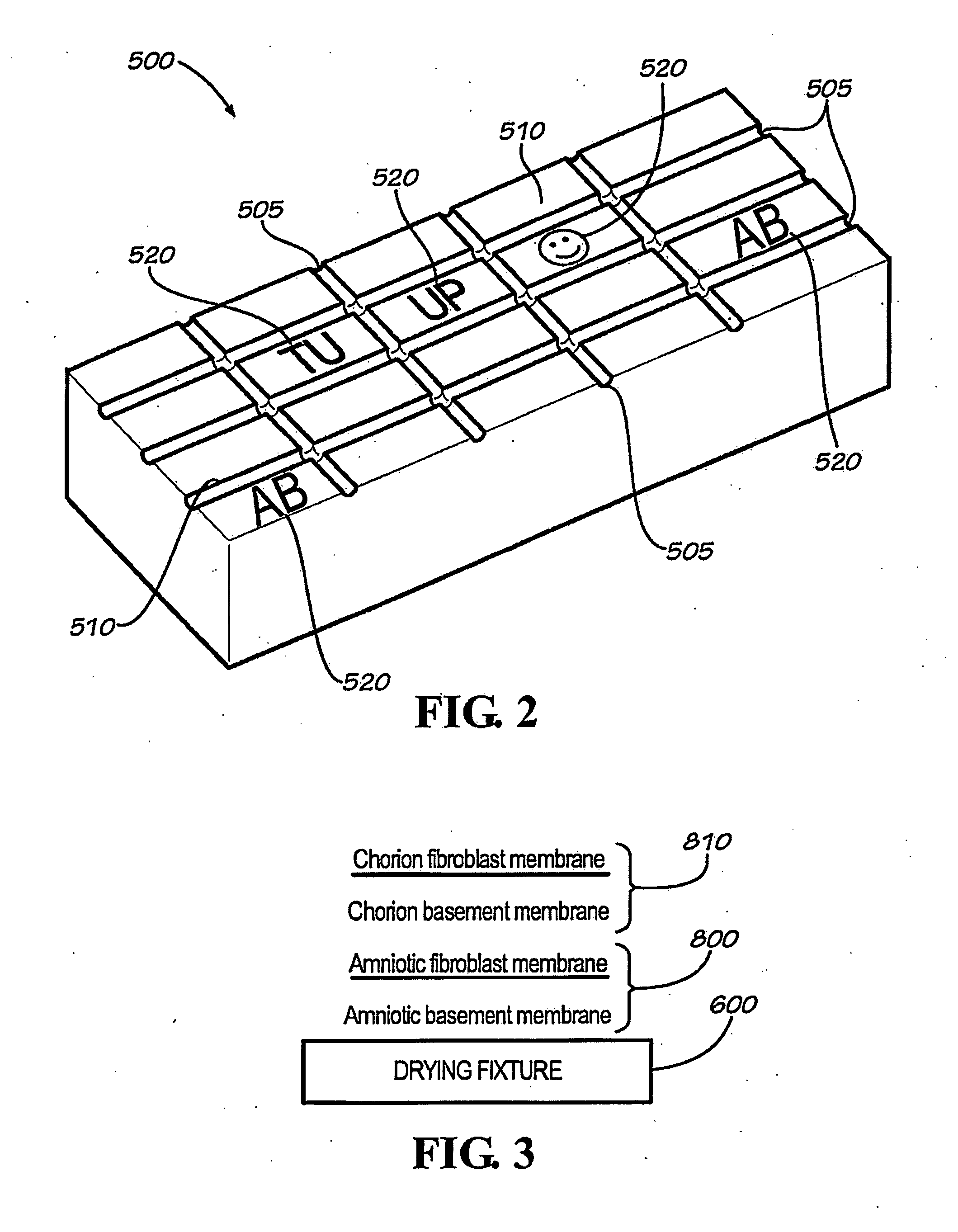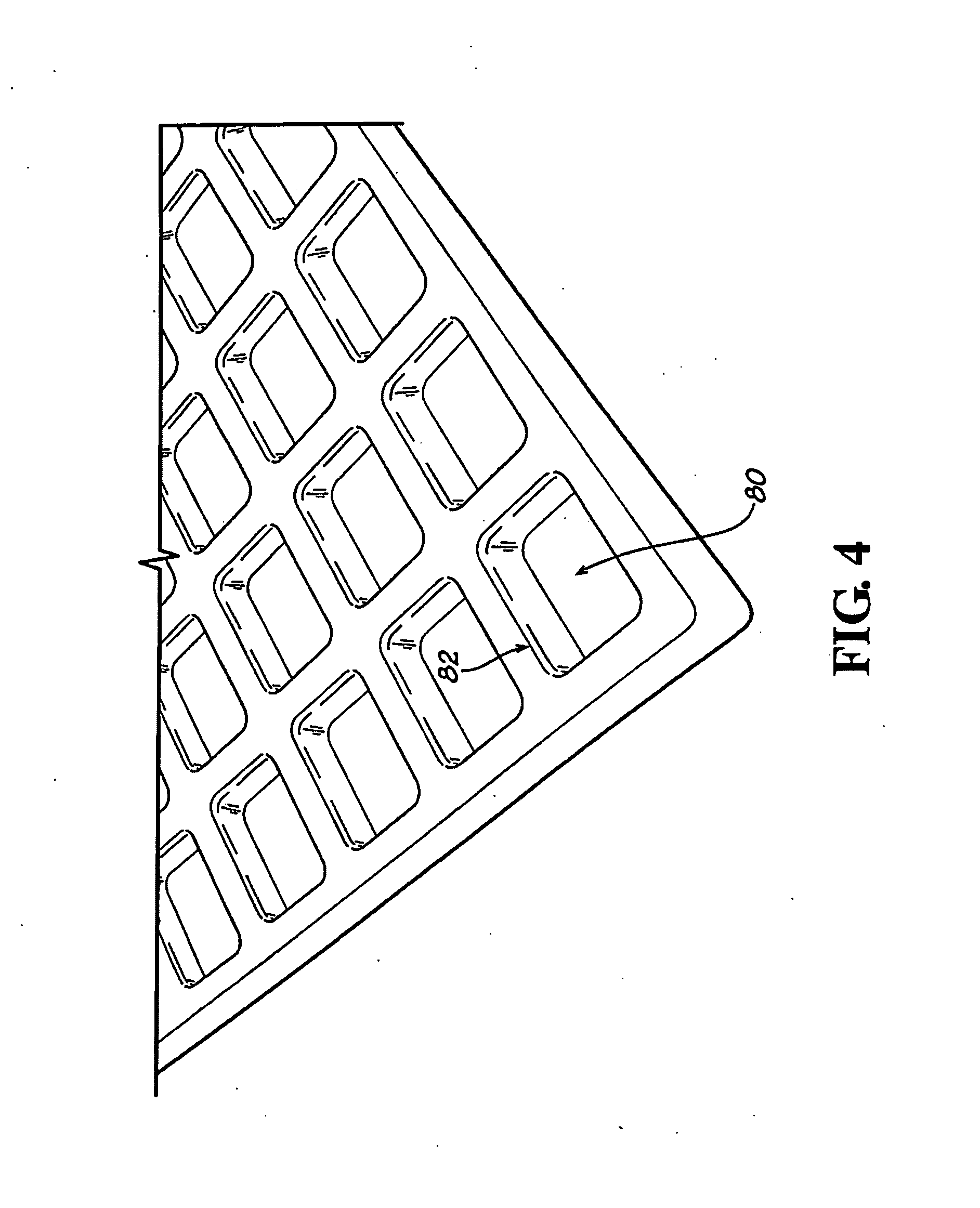Placental tissue grafts modified with a cross-linking agent and methods of making and using the same
a cross-linking agent and placental tissue technology, applied in the field of placental tissue grafts modified with a cross-linking agent, can solve the problems of csf fistula, severe headache, formation, etc., and achieve the effect of enhancing adhesion and good adhesion to biological tissues
- Summary
- Abstract
- Description
- Claims
- Application Information
AI Technical Summary
Benefits of technology
Problems solved by technology
Method used
Image
Examples
Embodiment Construction
[0021]Before the present articles and methods are disclosed and described, it is to be understood that the aspects described below are not limited to specific compounds, synthetic methods, or uses as such may, of course, vary. It is also to be understood that the terminology, used herein is for the purpose of describing particular aspects only and is not intended to be limiting.
[0022]In this specification and in the claims that follow, reference will be made to a number of terms that shall be defined to have the following meanings:
[0023]It must be noted that, as used in the specification and the appended claims, the singular forms “a,”“an” and “the” include plural referents unless the context clearly dictates otherwise. Thus, for example, reference to “a cross-linking agent” includes mixtures of two or more such agents, and the like.
[0024]“Optional” or “optionally” means that the subsequently described event or circumstance can or cannot occur, and that the description includes inst...
PUM
| Property | Measurement | Unit |
|---|---|---|
| thickness | aaaaa | aaaaa |
| thickness | aaaaa | aaaaa |
| thickness | aaaaa | aaaaa |
Abstract
Description
Claims
Application Information
 Login to View More
Login to View More - R&D
- Intellectual Property
- Life Sciences
- Materials
- Tech Scout
- Unparalleled Data Quality
- Higher Quality Content
- 60% Fewer Hallucinations
Browse by: Latest US Patents, China's latest patents, Technical Efficacy Thesaurus, Application Domain, Technology Topic, Popular Technical Reports.
© 2025 PatSnap. All rights reserved.Legal|Privacy policy|Modern Slavery Act Transparency Statement|Sitemap|About US| Contact US: help@patsnap.com



